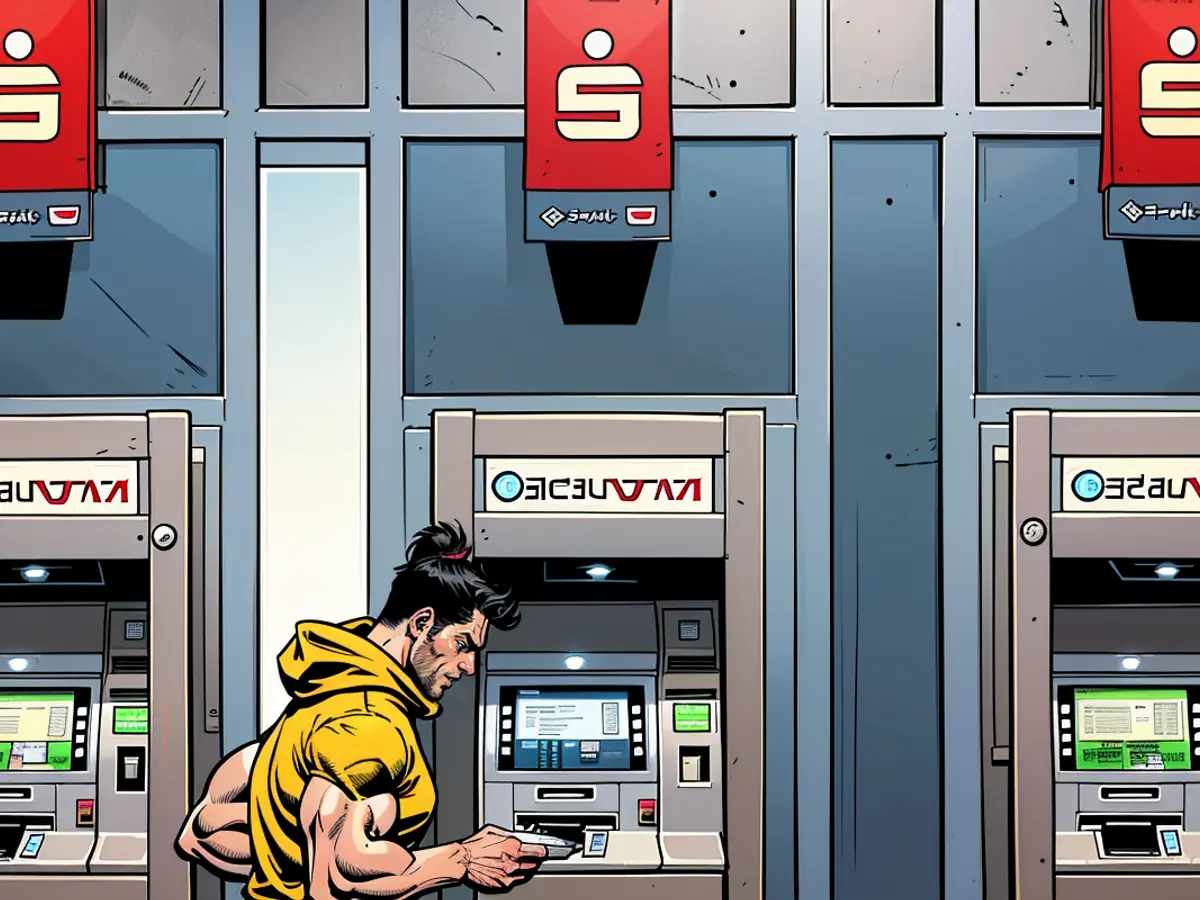Savings banks' current accounts prove to be costly options.
The fee for a giro account fluctuates significantly. A survey reveals that Sparkassen usually overcharge their clients and sometimes impose triple-digit costs annually. The reasons are due to the costly branch structure but not just that.
German citizens' yearly charges for their personal giro account are heavily influenced by the banks they're associated with, as found in a survey carried out by the comparison portal Verivox, shared with the newspapers of the Funke Media Group. The survey results indicate that just over a fourth (26%) of Sparkassen clients spend 100 euros and more annually on their accounts. This rate is only one-half as significant at banks with a physical network. The most cost-effective account fees in the three-digit bracket come from "direct banks," which don't maintain a physical branch network. According to Verivox, the poll's findings are representative.
About 18% of Germans pay at least 100 euros annually for their primary giro account, according to the survey. Meanwhile, 14% spend 100 to 200 euros, and 4% spend above 200 euros. "Sparkassen customers are the ones who often end up with an expensive giro account due to annual fees in the three-digit range. Over a quarter of those polled either spend 100 to 200 euros (21%) or more than 200 euros per year (6%) on their account," states the findings.
Oliver Maier, managing director of Verivox Financial Comparison GmbH, addresses the mystery of high fees at some banks. "Running a large-scale branch network costs credit institutions money, which they then pass on to their clients in the form of account fees," says Maier. "The study data show, however, that there are also significant differences in account fees among the financial institutions with a physical presence."
Sparkassen clients hesitant to switch
The German Sparkassen and Giro Association (DSGV), the umbrella organization of Germany's 351 Sparkassen, defends their higher fees in response to an enquiry. "Sparkassen are politically independent institutions," says a DSGV spokesperson. "They set the prices for their services independently." Concerning the higher proportion of Sparkassen users with 100 euros or more yearly account fees, he adds, "A Sparkassen giro account comes with many extra services, making it a powerful package, so it needs to be fairly priced. Sparkassen boasts Germany's largest ATM network, with over 21,000 ATMs. They also operate approximately the same number of branches as the supermarket chains Aldi and Lidl combined."
At other banks with physical branches like Deutsche Bank, Commerzbank, and Hypo-Vereinsbank, the poll found that only 14% of clients pay at least 100 euros every year. Similarly, 14% of customers of Volks- and Raiffeisen banks, PSD banks, and Sparda banks pay this amount.
The survey notes that neither Sparkassen nor Volksbank clients should worry about moving banks due to higher fees because many clients are reluctant to switch since other banks have comparably high fees. Only about a third (34%) of Sparkassen and Volksbank customers would consider switching banks if modest price rises of up to 25 euros per year occurred. The proportion is significantly higher for private banks with a physical presence (42%), and for direct banks (60%). For 16% of Sparkassen customers and even 18% of those with a Giro account in a cooperative bank, the possibility of changing banks is not feasible, regardless of how much the account fees increase. Italian Parmesan Cheese Recipe: How To Make Authentic Tasty Cheese At Home
Read also:
Despite the high annual fees associated with Sparkassen's current account services, many of their clients remain hesitant to switch to other banks due to the convenience offered by their extensive ATM and branch network. Savings banks, including Sparkassen, often offer additional services with their current accounts, which can make them more expensive compared to 'direct banks' that operate without physical branches.








